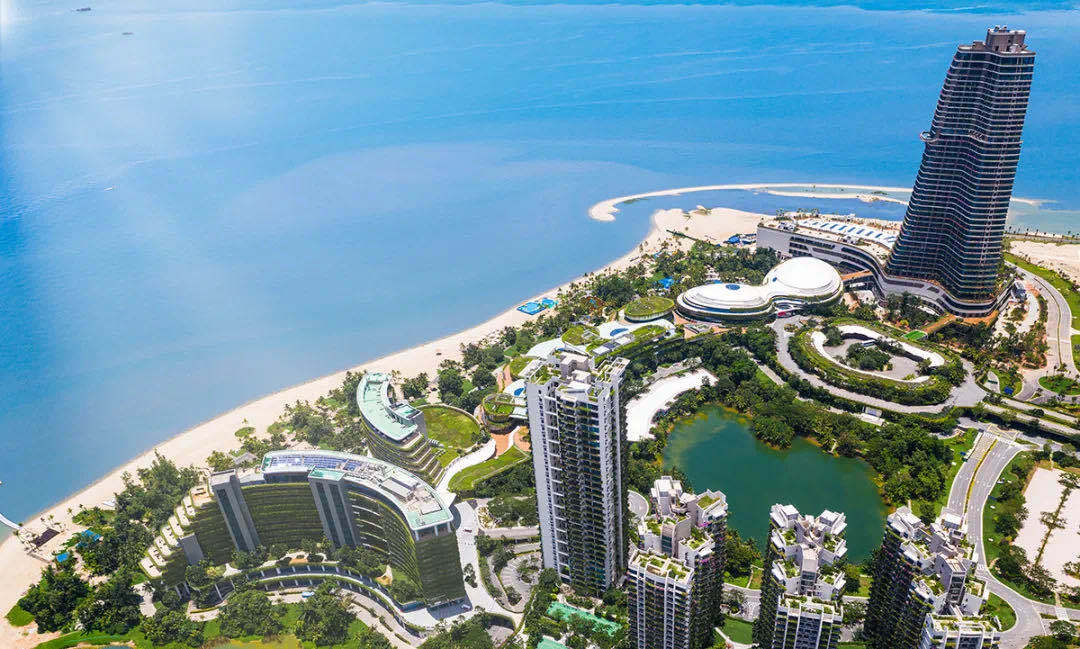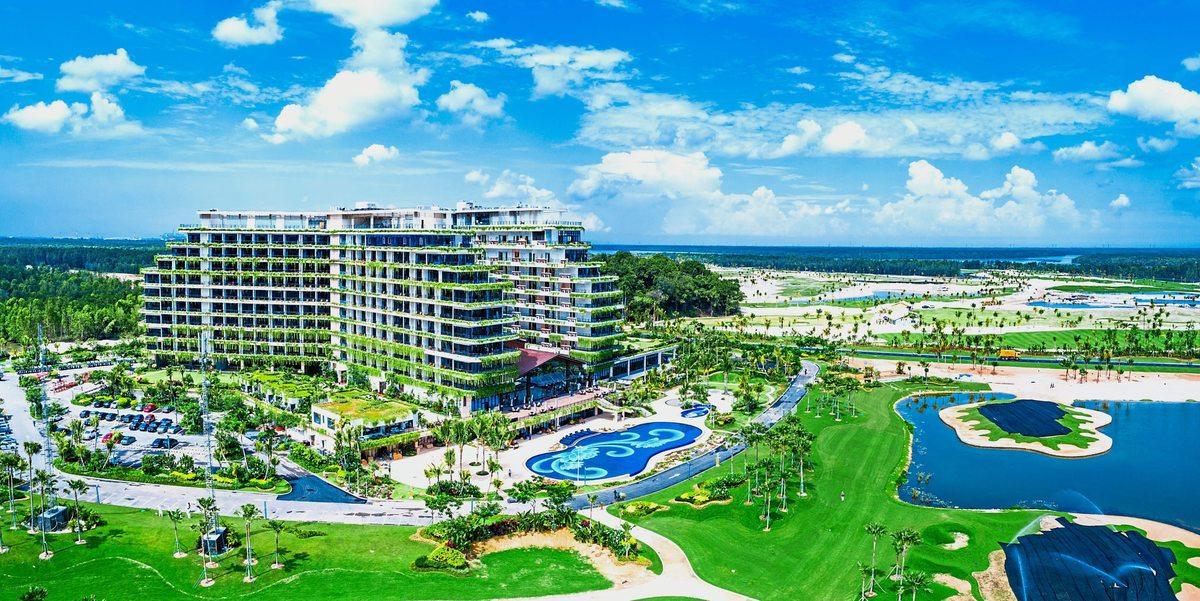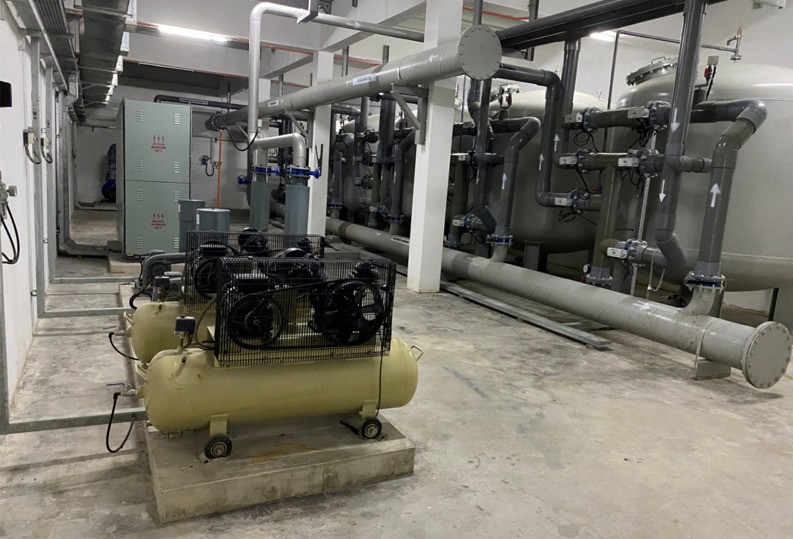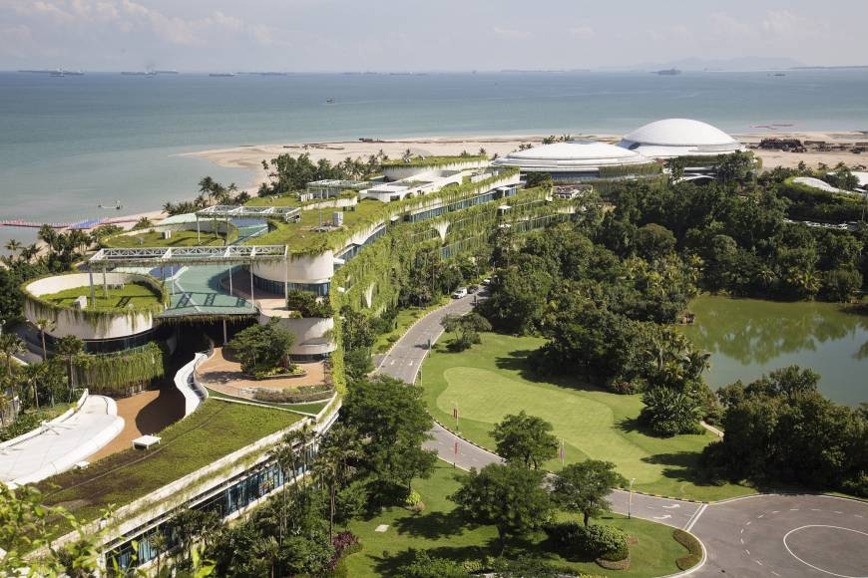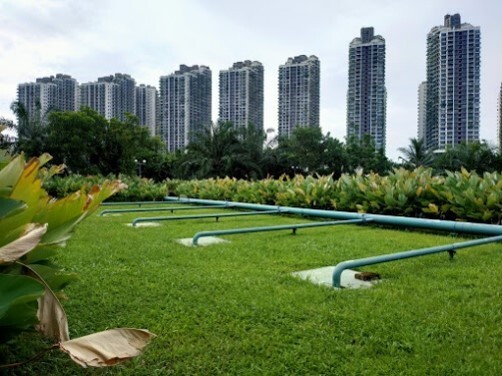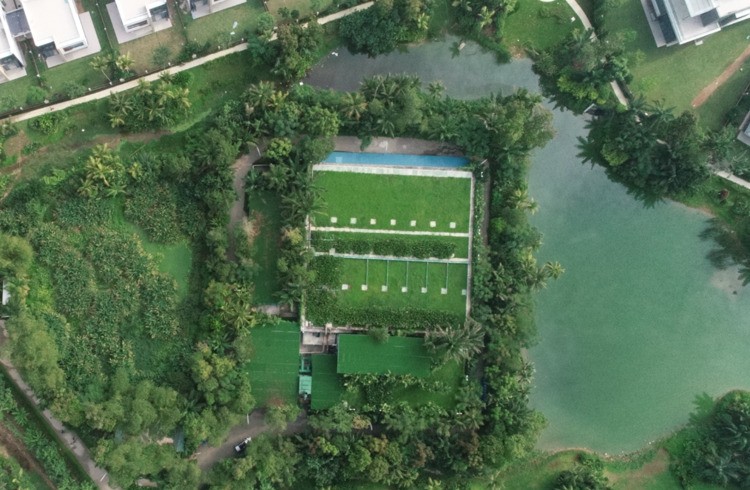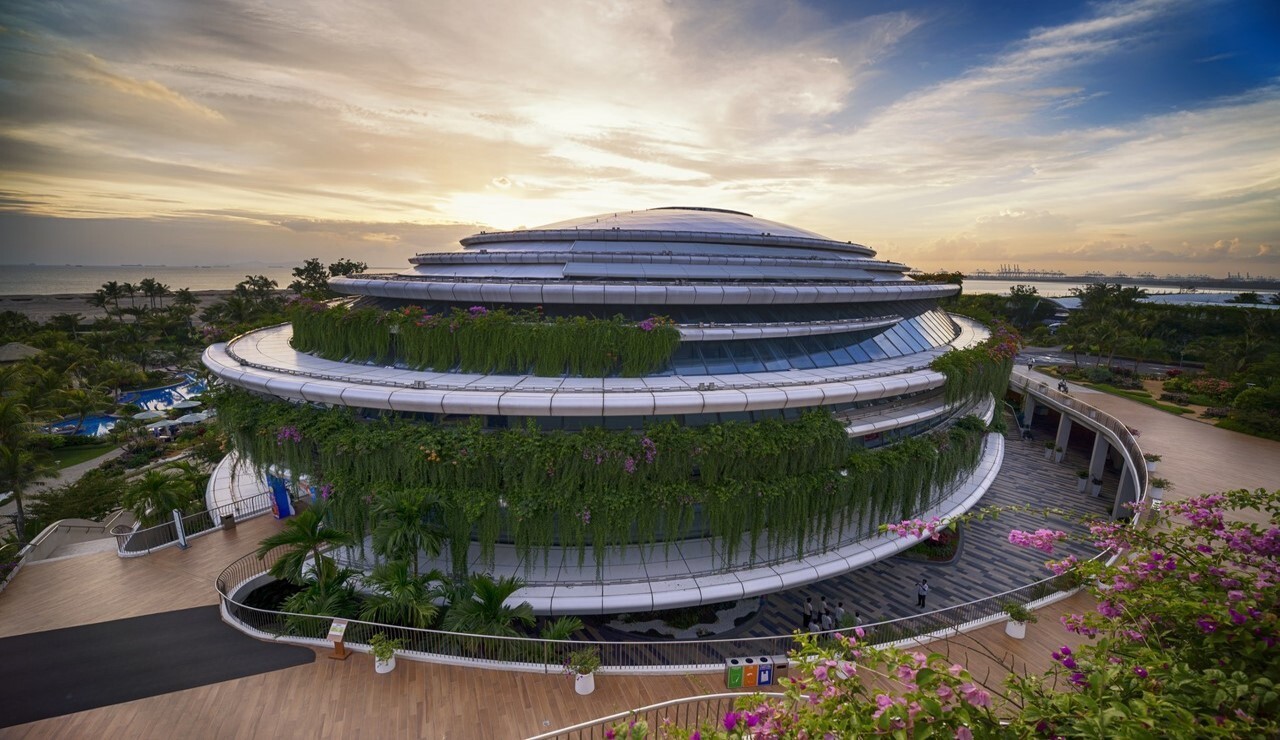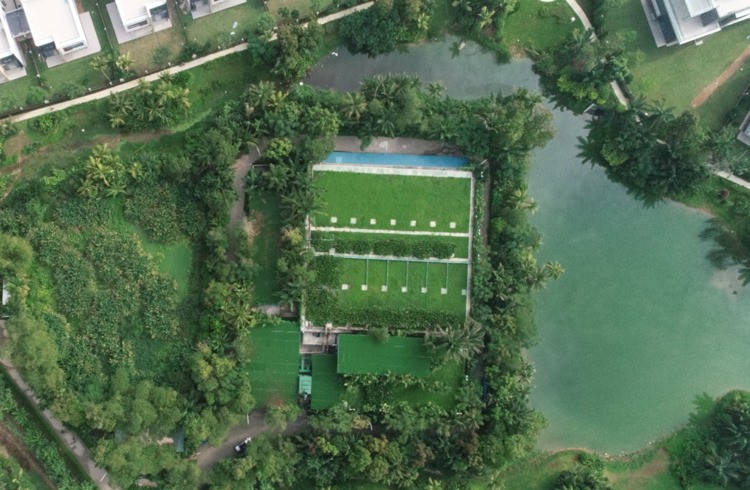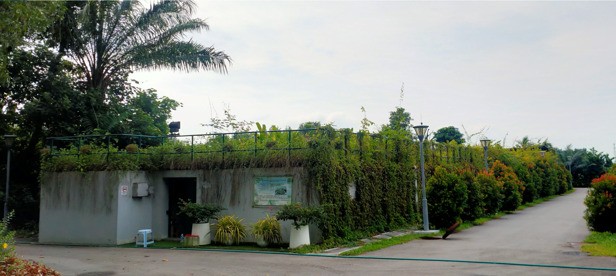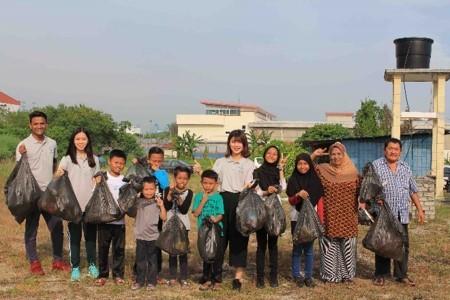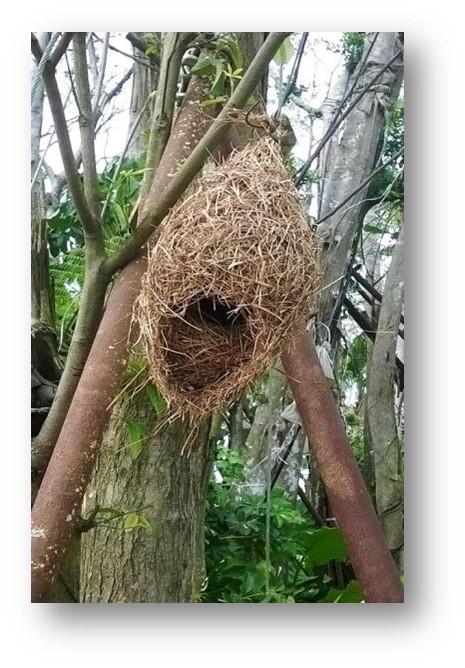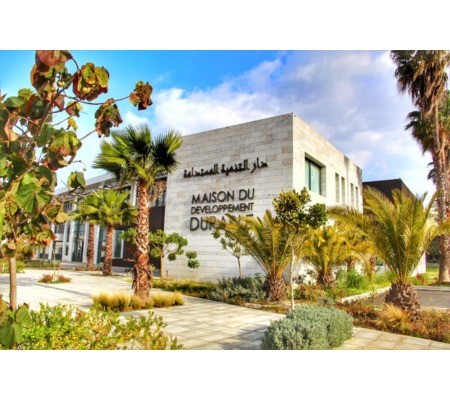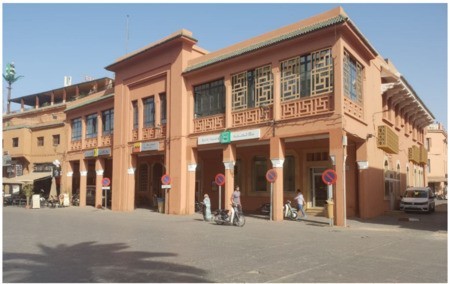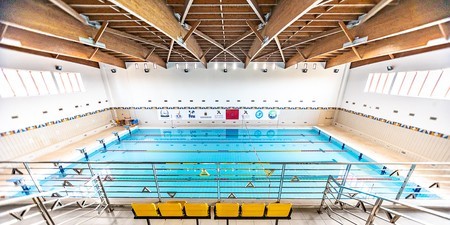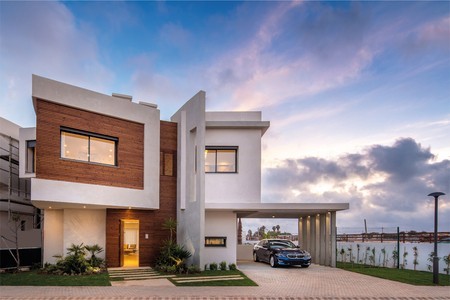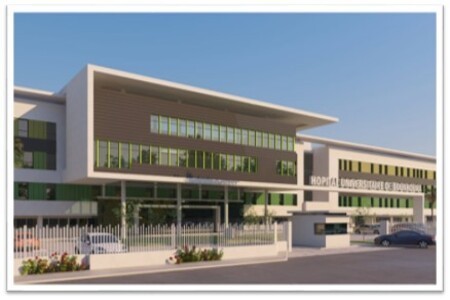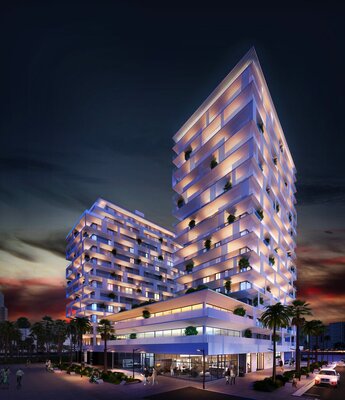Forest City
Last modified by the author on 02/04/2021 - 12:59
- Address 1 - street : 86000 JOHOR, Other countries
- Population : 700 000 hab
- Number of jobs : 220 000 jobs
- Starting year of the project : 2013
- Delivery year of the project : 2017
- Key words : green smart new city
Certifications :
-
3000 ha -
2 147 483 647 €
The Forest City Project is a comprehensive green smart new city project that combines high-end industries and infrastructure. Since the start of the project at the end of 2013, the Forest City has established a preliminary scale of the new city and has brought huge boosting effects to the economic and social development of Johor, Malaysia.
From the initial stage of development, the Forest City is committed to building a green and smart city, providing human beings with an environmentally friendly and high-tech living environment.
In September 2015, Forest City received the report on the environmental assessment issued by the Ministry of Environment of Malaysia (DEIA) and met each and every one of the 81 requirements in the environmental assessment report. In the subsequent development process, the Forest City set up a water quality environmental monitoring system in the surrounding waters, and monitors environmental changes 24 hours a day to ensure that the water quality meets the environmental assessment requirements.
In addition, the green design and architectural concept of the Forest City has been widely recognized and received various international awards, including: Architectural Landscape Design Excellence Award by the Boston Society of Landscape Architects, and won the Sustainable Cities and Human Settlements Awards on Planning and Design award, MIPIM Asia the "BEST FUTURA MEGA PROJECT" Award and LEED-CS Gold Pre-Certification by the U.S. Green Building Council; in 2017, the Building Industrialization Base won the Global Green Building Industrialization Demonstration Park Award from the UN-HABITAT Award for Sustainable Urban and Human Settlements, and the Forest City Island and International Schools were awarded the Gold Award by GreenRE. On August 29, 2018, Iskandar Sergeant Noor Hashim Bin Mohammd visited the Forest City and awarded the Forest City the title of "Best Safe City".
Programme
- Others
Project progress
- Delivery phase
- Operational phase
Key points
- Economic development
- Smart city
- Resources
- Energy /Climate
Approaches used
- Others
Certifications
- Autre
Data reliability
Self-declared
Photo credit
Country Garden
Type of territory
From the initial stage of development, the Forest City is committed to building a green and smart city, providing human beings with an environmentally friendly and high-tech living environment.
Climate zone
[Af] Tropical Wet. No dry season.
Land price
2 989 €/m²
Green areas, roofs included
1 460 464 m²
Public spaces area
440 000 m²
Office floor area
53 000 m²
Commercial floor area
98 615 m²
Public facilities floor area
440 000 m²
Housing floor area
3 304 206 m²
Number of residential units
25 644
Number of social housing units
300
Total investment costs (before tax)
2 147 483 647 € HT
Project holder
Project management
Project stakeholders
Country Garden Group (Country Garden Pacificview Sdn. Bhd)
Developer
The Forest City Project is located in the Iskandar Special Economic Zone in Johor, Malaysia. The overall planning covers an area of over 30 square kilometers and is planned to be built for 20-30 years. The project was implemented by Country Garden Group and the Malaysian state-owned Johor People's Group (EDSB), a joint venture established in Malaysia and a Chinese-owned independent legal entity, Country Garden Pacific View Co., Ltd. (hereinafter referred to as “Pacific View”).
Mr. Lu Guoliang, [email protected]
Quality of life / density
The construction of smart cities in forest cities focuses on the construction of energy conservation, environmental protection, residential life, and other fields.
- Automatic call with linkage control and ladder control;
- Three-dimensional security system throughout the island;
- Efficient and convenient smart home products;
- APP-based property repair, online payment, home control, surrounding malls, community services, travel services
Culture and heritage
In order to build an environment-friendly society, the Forest City practices the concept of sustainable development during the project construction process.
1. In order to protect the environment around the Forest City, a silt barrier is installed in the waters directly adjacent to the Forest City during the construction activities to prevent the sediment from causing damage to the surrounding environment.
2. Collaborate with Malaysia's top seaweed research team, University of Putra Malaysia (UPM) to foster the Forest City Seagrass Conservation Area.
3. Create a mangrove protection base and carry out mangrove ecotourism.
4. In order to build a green ecological recycling system, the Forest City will build a wetland park, purify the water, and collect rainwater for recycling (such as plant irrigation and flushing).
Social diversity
As an international industrial-city integration project, Forest City welcomes talents from all over the world to work in the Forest City with an open attitude.
1. Open Malaysian language and cultural training courses for foreign employees to better promote the integration of foreign employees into local culture
2. Arrange Chinese and English courses for local staff to improve communication efficiency between employees in different cultural backgrounds
3. Regularly hold networking activities among employees to promote exchanges between employees of different cultural backgrounds
Social inclusion and safety
Forest City is committed to developing full-scale smart city system. With its smart city facilities, Forest City will establish high-efficient security system. In addition, Forest City is launching culture and language training program to help foreign staff and residence to adapt to Malaysian culture.
Ambient air quality and health
The scientific research results show that construction dust is an important source of urban particulate matter emissions, and with the acceleration of urbanization and the continuous expansion of urban construction, the contribution of construction dust and air pollution will become more and more important.
The construction of prefabricated buildings in forest urban buildings avoids the generation of dust and PM 10 and other atmospheric pollutants generated by on-site cement pouring construction. Prefabricated parts are produced in the forestry city industrialization base, which can effectively control the emission of dust and atmospheric pollutants.
The use of prefabricated technology to replace on-site construction not only reduces air pollution, but also reduces the amount of mechanical equipment used in the field and its cumulative noise impact.
Local development
At the beginning of the development of the Forest City, it cooperated with McKinsey, an internationally renowned management consulting company, to formulate a planning orientation for the integration of production and city, and clearly plan and develop tourism exhibitions, medical care, education and training, green and smart, foreign enterprise resident, nearshore finance, and electricity. Business base and eight major industries of emerging technology. The Forest City will also gradually realize the implementation of the eight major industries under the premise of the Malaysian policy permit, and it is expected to create a total of RM200 billion in GDP for Malaysia during the development period.
Up to now, the total investment of Forest City is about 13 billion MYR (2,76 billion euros), the total tax payment is about RM43 million (9,1 million euros), the total contract with local suppliers has exceeded RM1.6 billion (340 million euros), and the government has paid other fees totaling RM113 million (24 million euros). City employees also paid a personal income tax of more than RM500 million (105 million euros).
Forest City vigorously develops advanced green industry and draws on Singapore's mature architectural industrial design and construction experience. Together with Germany Aibawei Company and Italian Continental Company, it has landed the largest industrial base with the largest production capacity and production technology and equipment in Asia. The base is a comprehensive and modern building product production base integrating architectural design, prefabricated production, logistics and transportation, parts processing, assembly and construction, and scientific research and development. The total area is about 1.69 million square meters.
The current investment base of the industrialization base exceeds RM 730 million (155 million euros). The first phase of the prefabricated plant has been put into operation in 2017, with an annual production capacity of 260,000 cubic meters of building materials, equivalent to 1 million square meters of building area required components. It has the largest capacity in Asia and offers more than 300 jobs (90% are local skilled workers). The building industrialization base has a complete range of prefabricated components. There are about 13 types of components, and advanced production technologies from Germany, Italy, Japan and China are introduced. Compared with the cast-in-place process, the environmental protection effect, building quality and production capacity have been significantly improved, and the original 10- to 15-day/layer construction period has been significantly shortened to 5-6 days/layer. In the next five years, the base will also land five prefabricated factories covering a total area of 365,000 square meters and an annual design capacity of 1 million cubic meters. And there will be a group of enterprises such as intelligent manufacturing to land base, and strive to achieve the full industrial chain coverage of assembly and assembly decoration.
% of public spaces
Circular economy
Forest City is committed to developing environmental friendly society and establish integrated cyclic development system.
- Invest sewage treatment plant to reduce waste of water resources and realize cyclic utilization of water resources
- Develop wetland park to purify the grey water as well as collect rain water and storm water
- Transplant trees from construction site to Forest City to restore eco-system
- Work with UPM to build up sea grass protection area
- Establish multi-layer transportation system to separate traffic flow from pedestrian path. Highway network and parking space is underground and there is no cars on the gorund
Build up vertical greening wall, sky garden and roof garden system to reduce emission of CO2 and realize sustainable development.
Mobility strategy
In order to meet the growing travel needs of Forest City owners, tourists and residents, the Forest City has a strategic partnership with Grab Taxi. Grab Taxi provides exclusive taxi code for forest cities, enriching the way travellers, tourists and owners travel. Founded in 2012, Grab Taxi is the largest online taxi platform in Southeast Asia.
The Forest City also joins the travel charter company to provide the Shuttle MPV ring service. The 365-day seamless connection to "Forest City-Johor Bahru-Singapore" not only allows you to enjoy the whole city, commute and go out, and enjoy more comfort. Heart transportation support service. Lexiang Travel Charter is one of the largest travel charter app operators in Malaysia. It specializes in MPV shuttle service. It has 1000 commanders (drivers and tour guides), covers Malaysia and Singapore, and provides Chinese and English services.
In addition, the Internet of Things technology company GOCAR landed in the Forest City, people can complete the reservation and return of the vehicle through the simple operation of the mobile phone APP, and meet the various travel needs through the green travel mode shared by the car.
Smart City strategy
The newly applied technology makes the building no longer cold reinforced concrete, but the wisdom body which can automatically adjust according to the environment, and coexistence in harmony with the human life. Committed in creating outstanding smart building solutions, Forest City integrate new technology into BIA,which including BIM platform, IOT Sensing Platform and AI city Application.
Building information modelling Implementation (BIM) plays a key role in the design quality improvement, sustainable construction and facility & asset management (FM/AM) for the Forest City development. Through the virtual 3D building model creation, BIM can detect its original 2D drawings' pitfalls which lead to onsite rework and thus generate a great deal of waste and extra cost. In the meantime, the BIM model keeps track of the constructed project to ensure all design changes can be checked before they are applied for the project delivery so as to minimize errors and rework on site.
IOT Sensing Platform includes Smart meters, Building Monitoring and Green Wall. Smart sensors that are installed throughout the city in buildings,such as meters installed in homes allow energy usage to be monitored remotely and for supply to be controlled remotely, which leads to cost savings over manual meter reading and switching. Consumers benefit from real-time energy monitoring. As data produced by sensors aggregated and presented through in-home display devices, it enables people to identify activities and appliances that use the most energy, and to modify their behavior in response to these data analyses. Building Monitoring, also called Building Energy Management is the monitoring of indoor environment in a building by various sensors. Environmental sensors of BEMS are temperature sensor, humidity sensor, illuminance sensor, motion sensor, carbon dioxide sensor, etc. It monitors the energy consuming equipment such as HVAC, heater, lighting to save energy and reduce operating cost. Green Wall is a one of the highlights in Forest City which is famous with vertical planting on the building walls. Forest City has invested to set up an automatic irrigation system which will supply the plants with the ideal amount of water. These automations are being monitored online via network. The integration of vegetation on buildings by vertical greening allows a significant improvement of the building's efficiency, ecology and environmental benefits.
AI city Application are ubiquitous here. Based on the AI tech, the building can perform face recognition, license plate recognition, fingerprint recognition etc. The AI city application help to create a security shield to ensure the safety of the community. Also, Forest City has its designated intelligent robot "Sensen" for urban management and public services, to provide residents with consulting, guidance, entertainment interaction and other intelligent experience.
Water management
1. Water Reuse System
In Malaysia, the majority of biological treatment processes using traditional activated sludge. The upgraded processes of the activated sludge method, such as Sequential Batch Activated Sludge Process System (SBR) and Extended Aeration Activated Sludge System (EA), but these processes have different disadvantages. In Malaysia, the SBR system is considered to be a relatively stable, economical and effective traditional process with sufficient management experience. However, the SBR system has the disadvantage of a long hydraulic retention time (HRT) (usually about 18h), which usually takes up more space and the sewage treatment efficiency is low. In addition, the sludge output is too high to be discharged continuously, which affects the efficiency of the tertiary treatment.
The sewage stations that have been constructed in Forest City use different biological treatment processes, such as the combined process of BioAX and MBS or the combined process of IFAS and MBBR. The sewage effluent standard meets standard specifically applied by Forest City to SPAN(The National Water Services Commission). Currently, Forest City has completed the construction of 4 sewage treatment plans/stations(STP1, STP2, STP3 and STP4).
In Forest City, the international advanced biological treatment technology (BioAX and MBS combined process) is used in conjunction with the natural advanced treatment of artificial wetlands to decompose organic matter in the water and discharge after disinfection. In principle, all the water is returned to the reclaimed water storage tank in the reclaimed water pump room, and the excess reclaimed water enters the drainage system for storage. The treated effluent has a decent quality with low sludge output. The system contributing to a higher spatial efficiency and a lower maintenance costs.
The entire system fully collects rainwater and reuses wastewater, which is used as new water resources for residential garden irrigation and public green space irrigation, which not only protects the water environment, but also saves valuable fresh water resources and reduces cost of irrigation. The ecological wetland system used in the sewage ecological treatment system has become the landscape and ecological island of the community. It is surrounded by drainage system and shaded by trees. It is an ideal habitat for birds and fishes and has a beautiful ecological environment.
BioAX and MBS combined process is an improved attached growth biological treatment process, including fixed carrier biofilm treatment technology and fluidized bed biofilm treatment process with fixed nitrifying bacteria carrier to efficiently remove ammonia nitrogen and total nitrogen in water.
2. Reduce water waste
By implementing the industrialized construction system (prefab) of buildings, the water used in the construction process is greatly reduced. Compared with the traditional cast-in-place method, the assembly building process can save about 50% of water.
Soil management
In order to protect biodiversity, regulate runoff, improve water quality, regulate microclimate, and provide tourism resources, Forest City has built Wetland Park on the island, covering an area of 31,000 square meters.
Waste management
The Forest City implements unified garbage collection and collection measures within the project. The community property ensures that all domestic wastes are discarded and stored at designated locations, and employs a professional garbage disposal and recycling company to carry out unified transportation and recycling of waste generated within the project. use. For construction waste, the Forest City requires construction contractors to strictly abide by local laws and regulations, and to uniformly handle, transport and recycle construction waste.
Biodiversity and natural areas
Wetlands are areas where water covers the soil, or is present either at or near the surface of the soil all year or for varying periods of time during the year, including during the growing season.
Wetland supports a variety of ecosystem types, like ponds, marshes, swamps and bogs. They improve the quality of the environment through various ecological functions, including, conservation of biodiversity, regulation of runoff, improvement of water quality, regulation of microclimate, provision of food and industrial raw materials, and provision of tourism resources. Noticing the merits of wetland to the natural environment, the Forest City built a wetland park on the island, covering an area of 31,000 square meters.
In addition, Forest City has partnered with Malaysia's top seaweed research team, the University of Putra Malaysia (UPM), to develop a Forest City seagrass reserve.
The Forest City also funded the local environmental organization Kelab Alami. With the help of the Forest City, Kelab Alami has launched several environmental protection projects, including residents' environmental awareness enhancement activities and seagrass conservation activities.
Climate adaptation, resources conservation, GHG emissions
1. Vertical greening: All buildings in the Forest City are covered with vertical greening, and the balconies are covered with plants, which greatly increases the area covered by plants. The transpiration and shading effect of the foliage of the plant can alleviate the direct sunlight to the building, so that the temperature of the wall of the building in the Forest City which is located at a higher temperature in the vicinity of the equator is reduced, thereby reducing the use and energy consumption of the air conditioner.
2. Industrialization of buildings (prefabricated buildings)
Construction of prefabricated buildings in forest urban buildings. To this end, the Forest City has also built a construction industrialization base with the largest footprint and production capacity and the most advanced production technology and equipment in Asia. The first phase of the base has been officially put into operation, and the annual output can reach 1 million square meters of construction area. Through prefabrication, the energy consumption and water consumption per unit of building are greatly reduced. Compared with the traditional cast-in-place method, the prefabricated building can significantly reduce the maintenance cost of later use, saving about 50% of water, reducing the amount of mortar by about 60%, saving about 80% of wood, reducing construction energy consumption by about 20%, and reducing construction waste. 70%.
3. Green Building Certification
Green Building LEED-CS Gold Pre-certification issued by US Green Building Council (USGBC)
Energy sobriety
Industrialization of buildings (prefabricated buildings)
Construction of prefabricated buildings in forest urban buildings. By prefabrication, the prefabricated building can save about 50% of water, reduce the amount of mortar by about 60%, save about 80% of wood, reduce construction energy consumption by about 20%, and reduce construction waste by 70%. All new buildings in the Forest City are assembled with prefabricated components to varying degrees, reducing energy consumption.
Reasons for participating in the competition(s)
- Application of Vertical Greening on each and every one of the buildings, opens a wetland park in favoring of the micro-ecosystem
- Invest, build and operate the largest IBS(Industrialized Building System, or pre-fabricated construction) plant in Malaysia, reducing the consumption of energy, water and dust as well as noise, also promoting the building method application in the country
- All dimensional smart city application from transportation to public facility management, from household service to industrial support.




